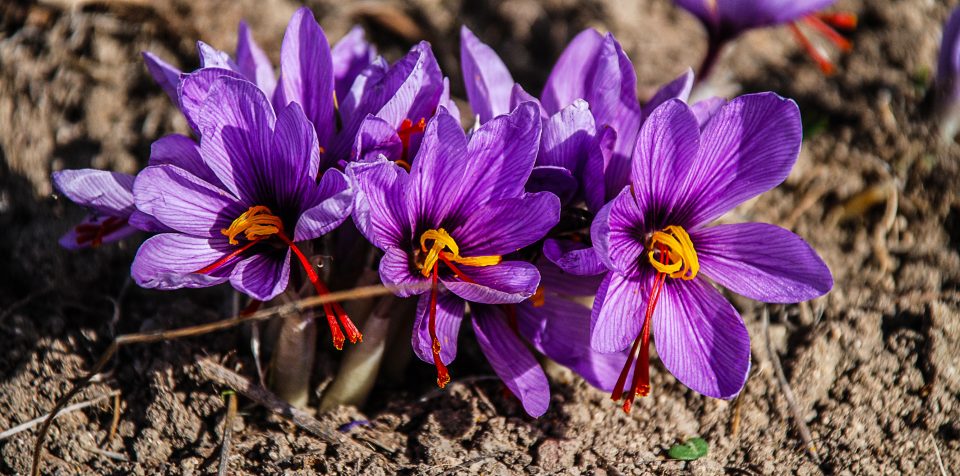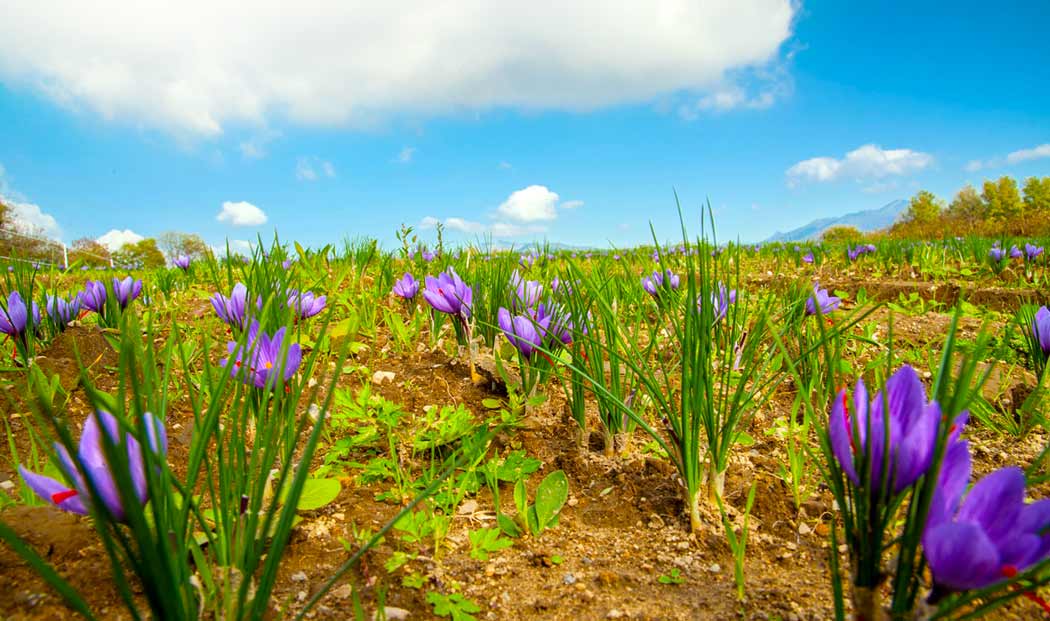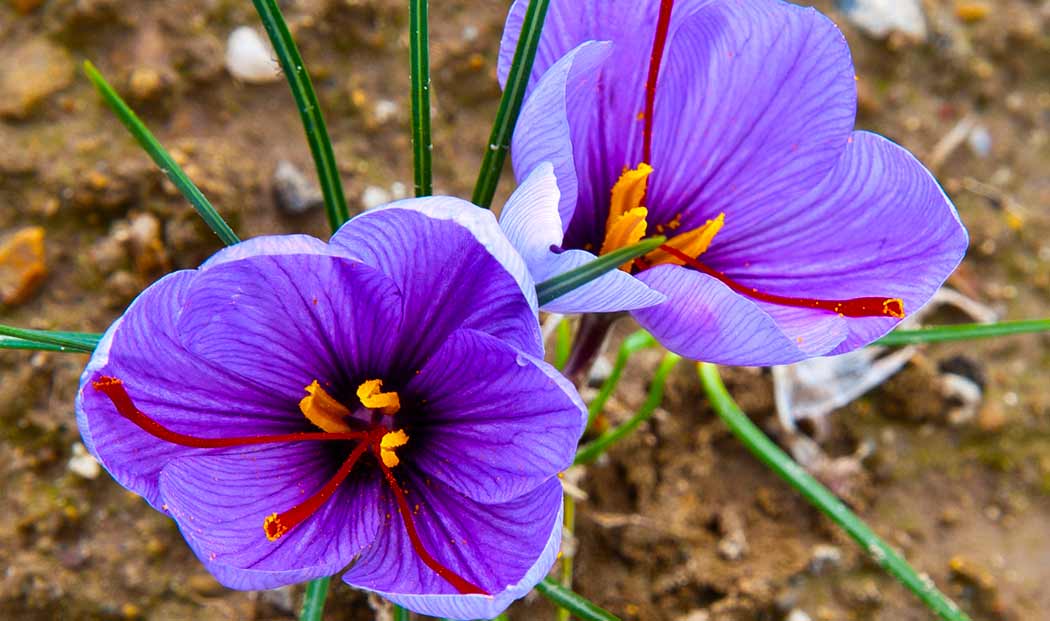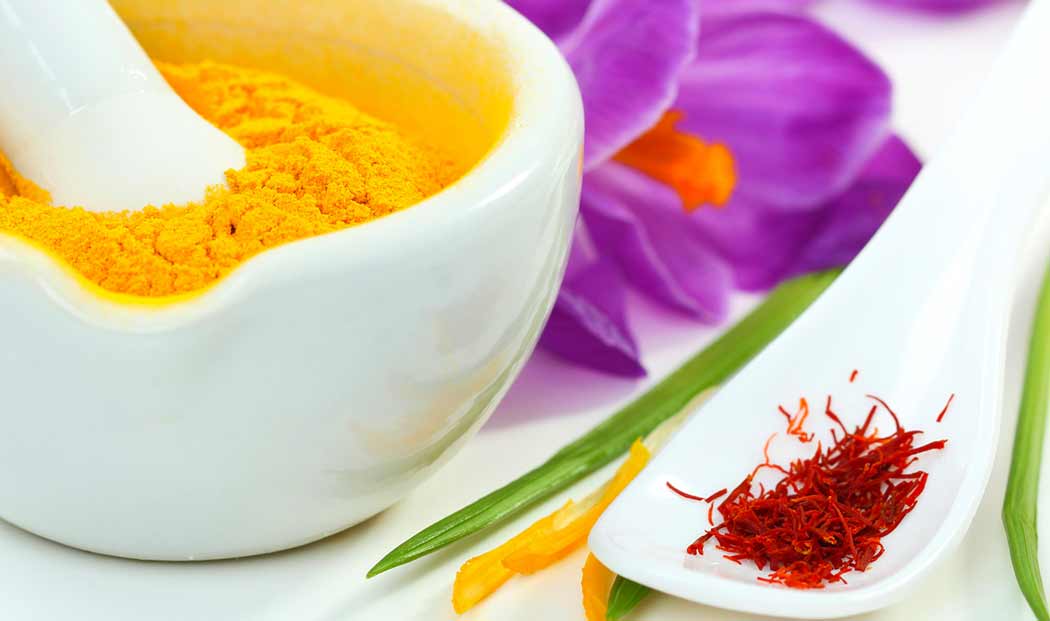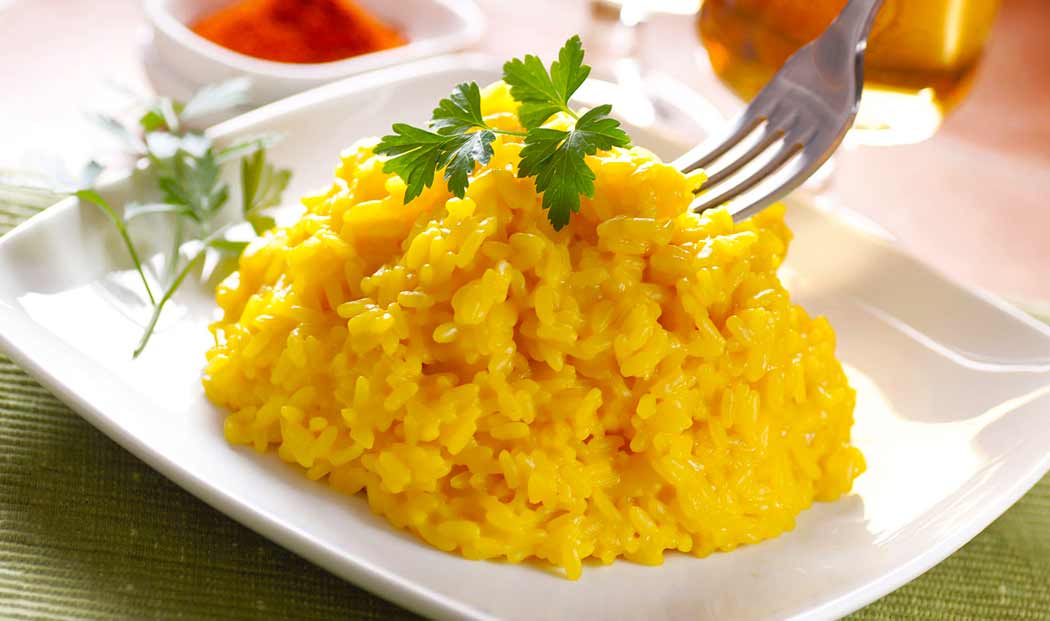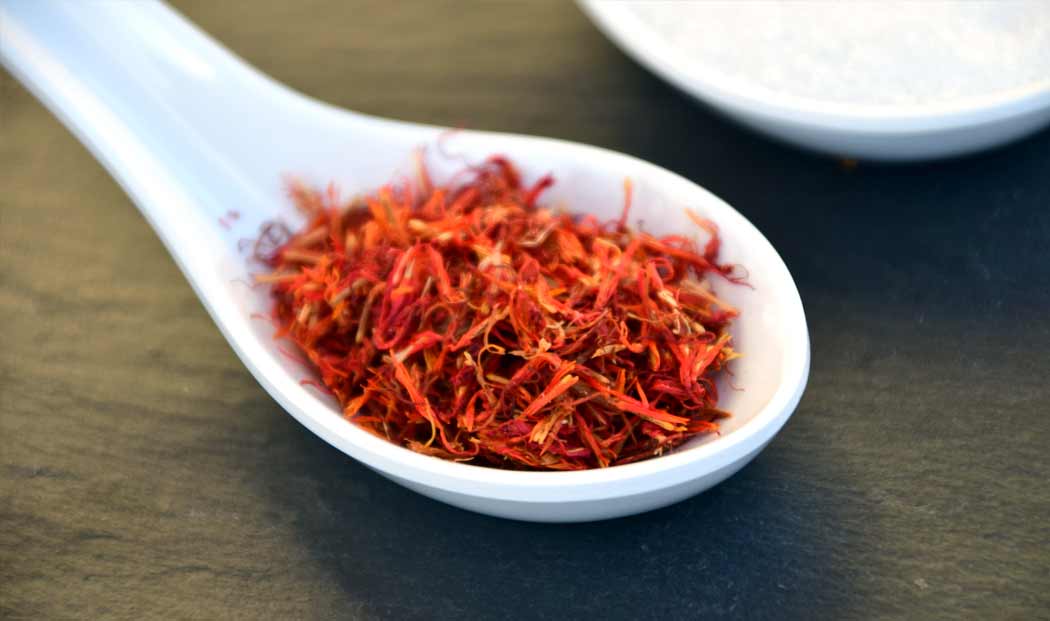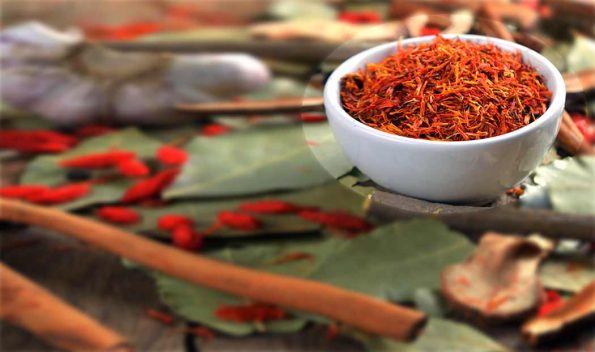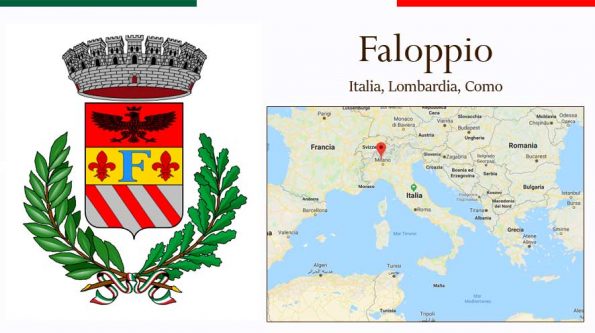Derived from Arabic za῾farān the name saffron. It is obtained from the trifid stigma of the Crocus sativus, a plant of the Iridaceae family, cultivated in Asia Minor and some countries of the Mediterranean basin, including Italy. True saffron is considered red gold, due to its sensory characteristics and antioxidant organoleptic properties.
The true saffron plant grows to 20-30 cm and bears up to four fruits, each with three stigmas. The stems and stigmas are harvested and dried for use mainly in cooking; they are picked by hand, gently, so as not to spoil them. About one hundred and fifty thousand to one hundred and eighty thousand flowers are needed for one kilo of spice. Depending on the varieties of bulbs and climates, the flowers are harvested between October and November.
In Italy, saffron is produced in several regions, with Protected Designation of Origin status granted to saffron from L'Aquila (Abruzzo, province of L'Aquila), saffron from Sardinia (province of Medio Campidano) and saffron from San Gimignano (Tuscany, province of Siena), it is also cultivated in Montegiorgio, in the Marche, Cascia and Città della Pieve, in Umbria and only recently has a beautiful reality been born in the province of Como where the lake air, a sunny hillside and ideal soil rich in minerals have proved Rolando Germani's entrepreneurial intuition right. without the use of additives or chemicals, has achieved a very special result with the first harvest of Zafferano Collina d'Oro. Mr Germani definitely loves excellence and in an interview he tells us all the secrets of this precious spice.
Saffron is often 'confused' with other spices, what are the differences? Which spices too often become accomplices in unfair commercial actions?
It is estimated that 70-80 per cent of the saffron consumed in Italy is imported and passed off as domestic. All this happens without the consumer's knowledge. Approximately 180 tonnes of saffron are produced worldwide every year. 90 % comes from Iran, but also from India, Greece, Morocco and Spain. Italy produces about 500 kg. It is more difficult to adulterate the red filament, while the powder can be mixed with other, less valuable spices. The risk of finding counterfeit saffron on the market is very high, in fact, the European Commission estimates that counterfeit spices are among the ten food products most at risk of fraud, ranking eighth.
As we said, the product most at risk of fraud is powdered saffron because it can be mixed with other parts of the plant or with different plants such as turmeric, safflower or 'false saffron', marigold, and with synthetic minerals or dyes. Adulteration of saffron threads, which cannot be mixed with other spices, plants or plant parts, is less easy. It is commercial fraud when the valuable product is mixed with cheaper components, although the addition of synthetic dyes such as tartrazine should not be overlooked. The reason is mainly economic, since turmeric costs ten times less.
Risotto alla Milanese could never taste the same with saffron substitutes, what is the flavour component that sets it apart?
Pure saffron is distinguished from false saffron by its intense and aromatic flavour but also by the amber colour it lends to risotto. When the spice is really valuable, it takes on value in the dish without the need to use heavy seasonings such as butter and oil. Finally, the aroma of risotto made with authentic saffron is truly unique because it reveals the heart of the saffron
Italian saffron is said to be among the best in the world, is this true?
The red gold of Sardinia and Abruzzo represents one of Italy's excellences and is renowned throughout the world. It is also interesting to note that laboratory analyses show that saffron made in Italy is richer in safranal and crocin than foreign saffron. These two elements are fundamental in imparting flavour to the spice but are also rich in health benefits such as anti-radical action and improving mood.
You can buy 'Collina d'Oro' products in the company shop:
Saffron and legends - Usage and customs
As far as the Greeks are concerned, mythology points to two different ways to explain the origin of saffron flowers. According to the first explanation, the gods turned the young Crocus into a flower, to punish him for falling in love with the beautiful nymph Smilace. The second version speaks of a Ermes (Mercury) distracted, who accidentally hit his friend Crocus during a discus-throwing competition, killing him; his blood from that moment turned into a flower.
The Latins used saffron in cosmetics or as a dye for clothing. Since the Middle Ages, however, its major use has always been in the hands of refined cooks.

